| Corcoran Technical Trading Patterns For December 22 |
| By Clive Corcoran |
Published
12/22/2008
|
Stocks
|
Unrated
|
|
|
|
Corcoran Technical Trading Patterns For December 22
The Dow Jones Industrials (DJIA) was a relative under-performer in Friday's trading and is in danger of losing contention with the upward slanting slope that has been steadily building since the November lows.
The 9000 level has clearly posed a major obstacle on the upside and during last week the bulls found it hard going to really follow through on the momentous Fed policy moves and even Friday's rescue loan for the auto makers.
A drop below the 8500 level on a closing basis would raise the possibility that year end selling may get a little out of hand, but one also has to suspect that institutional inertia in the next few sessions could keep the index out of trouble.
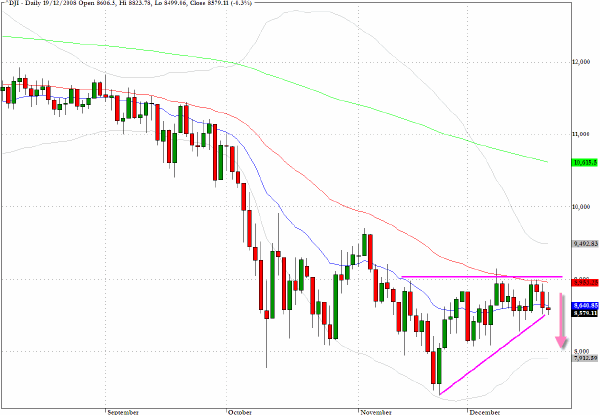
London's FTSE is almost two percent off in current trading on Monday morning and in accordance with comments about the DJIA there is mounting evidence that there is a clear overhead supply which is confining the efforts of the bulls to produce a customary Santa rally.
Sentiment is very fragile in the UK and the state of the public finances continues to produce negative surprises. The fact that the UK Treasury will have to engineer a strategy to sell more than 150 billion pounds of government debt in the new year is likely to further pressure sterling, and pronouncements about the depth and length of the recession are getting gloomier as more economic data arrives.
For UK readers during this festive season, and especially so in the current woeful economy, this year more than most we should make a special effort for the kids as they could well be dealing with the legacy of the dismal public finances for years to come.
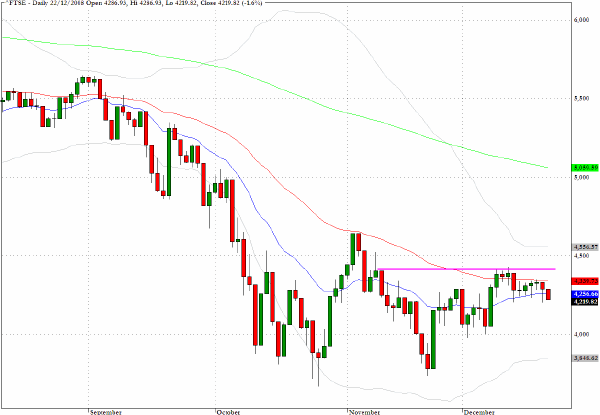
Last week's surge in the euro and Swiss franc was certainly overdone but I would suspect that there will be another move against the US dollar in the remaining sessions of the year. I would be a buyer of the inverse dollar index fund, UDN, at or near to the level suggested on the chart below.
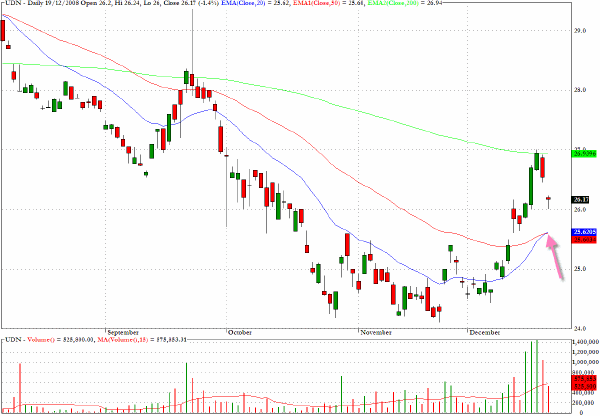
IYH, the exchange traded fund for the Dow Jones US Healthcare sector, could make a little further progress towards $55 but the doji star from Friday's trading suggests that the sector may be vulnerable to a corrective move after rallying back to resistance.
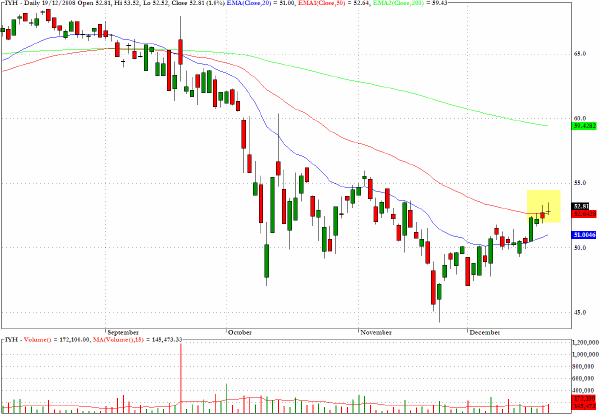
McDonalds has struggled several times to penetrate the $64 level but there is an intriguing cup and handle pattern emerging which suggests that, along with a strong case on fundamental grounds, the technical condition is suggesting higher prices ahead.
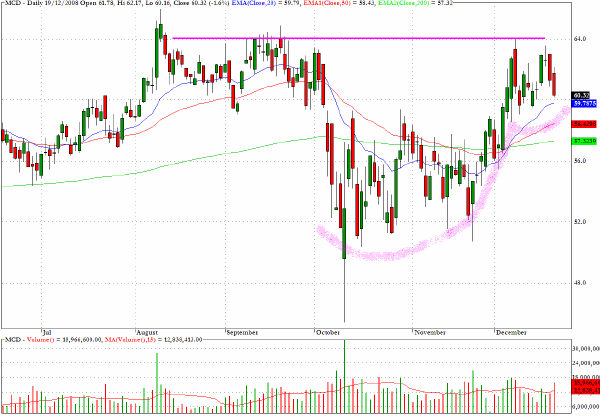
Jacobs Engineering (JEC) has a constructive pullback pattern and could be ready to move higher after retreating to probable support at the intersection of two moving averages.
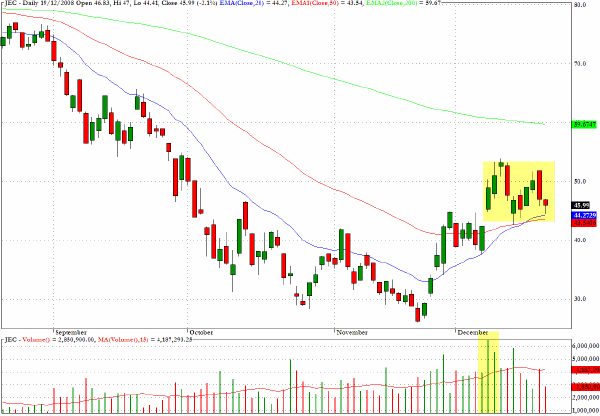
JP Morgan (JPM) is nestled at the tip of a triangular pattern which could portend a breakaway move which is more likely to be down than up.
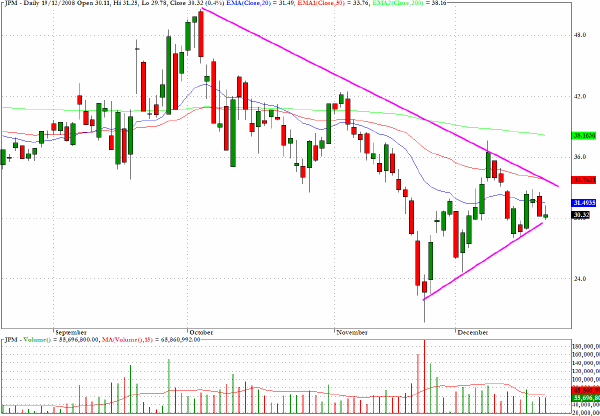
Timberland (TBL) appears ready to correct after recovering into an area of chart resistance.
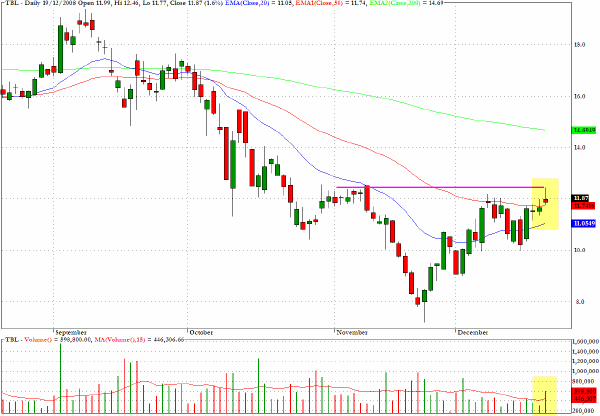
I favor the long side for Taiwan Semiconductor (TSM) and would be targeting the 200-day EMA (green line on the chart) in the intermediate term.
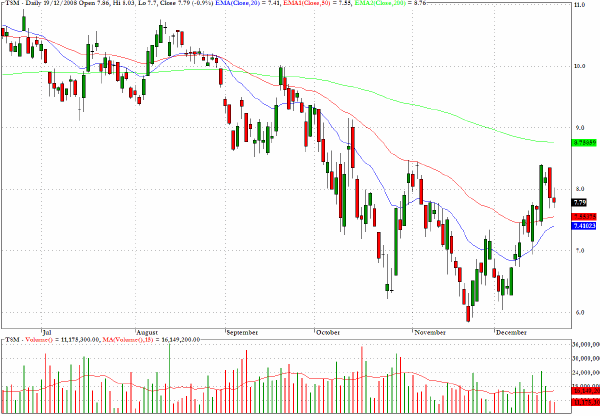
Tessera (TSRA) has rallied back to an obvious (perhaps too obvious?) level where renewed selling could appear.
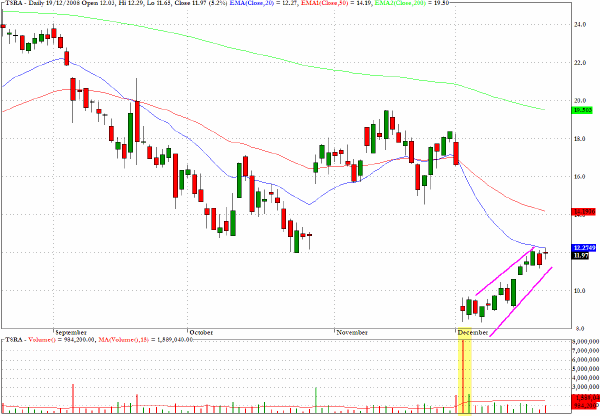
Clive Corcoran is the publisher of TradeWithForm.com, which provides daily analysis and commentary on the US stock market. He specializes in market neutral investing and and is currently working on a book about the benefits of trading with long/short strategies, which is scheduled for publication later this year.
Disclaimer
The purpose of this article is to offer you the chance to review the trading methodology, risk reduction strategies and portfolio construction techniques described at tradewithform.com. There is no guarantee that the trading strategies advocated will be profitable. Moreover, there is a risk that following these strategies will lead to loss of capital. Past results are no guarantee of future results. Trading stocks and CFD's can yield large rewards, but also has large potential risks. Trading with leverage can be especially risky. You should be fully aware of the risks of trading in the capital markets. You are strongly advised not to trade with capital.
|